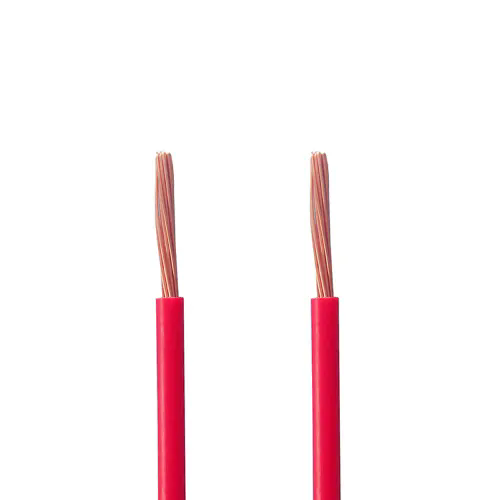Everything You Need to Know About RV Power Cables: A Guide for Safe and Efficient RVing
2024-10-12
For RV enthusiasts, having a reliable and efficient power source is critical to enjoying all the comforts of home on the road. Whether you’re plugging into a campground’s electrical hookup or running off a generator, a good RV power cable is essential for powering appliances, lighting, and other electrical systems in your recreational vehicle. In this blog, we’ll cover what you need to know about RV power cables, including types, proper usage, and safety tips to ensure your adventures are powered smoothly.
What Is an RV Power Cable?
An RV power cable, sometimes called a shore power cord, is designed to connect your RV’s electrical system to an external power source. This cable provides electricity to your RV so that you can run your lights, air conditioner, microwave, refrigerator, and other appliances while stationary at a campsite or charging your battery system.
RV power cables come in different sizes and amperages, depending on your RV's electrical system and power needs. Choosing the correct power cable is important to ensure that your RV receives the proper amount of power without overloading its circuits.
Types of RV Power Cables
The two most common types of RV power cables are 30-amp and 50-amp cords. Each is designed for a specific type of RV setup, and using the wrong one can lead to power issues or even damage to your vehicle’s electrical system.
1. 30-Amp RV Power Cable
A 30-amp RV power cable is typically used for smaller RVs or trailers with less demanding electrical systems. It has three prongs (one hot, one neutral, and one ground) and can handle up to 3,600 watts of power (120 volts x 30 amps = 3,600 watts). If your RV’s electrical system is set up for 30 amps, this is the power cord you’ll need.
2. 50-Amp RV Power Cable
A 50-amp power cable is designed for larger RVs with more energy-demanding appliances like multiple air conditioning units. It has four prongs (two hot, one neutral, and one ground) and can deliver up to 12,000 watts of power (120/240 volts x 50 amps = 12,000 watts). This higher capacity allows you to run more appliances at the same time without tripping circuit breakers.
How to Choose the Right RV Power Cable
When selecting an RV power cable, consider the following factors:
- Amperage: First, make sure to match the amperage of the cable (30-amp or 50-amp) with your RV’s electrical system. Using a 30-amp cable on a 50-amp RV system will limit your available power, while using a 50-amp cable on a 30-amp system can cause safety issues.
- Cable Length: Standard RV power cables come in lengths ranging from 25 to 50 feet. Choose a length that allows you to easily reach electrical hookups at campgrounds, but avoid excessively long cables as they can lead to voltage drop.
- Quality and Durability: Look for cables that are made from high-quality, weather-resistant materials. Many RV power cables are coated with thick insulation to protect against harsh outdoor conditions like rain, sun exposure, and temperature extremes.
- Ease of Use: Some RV power cables come with additional features like LED power indicators or ergonomic handles for easy plugging and unplugging. These can enhance convenience, especially when dealing with power hookups in low-light conditions.
Safe Usage of RV Power Cables
Proper use of your RV power cable is essential for both your safety and the efficient operation of your RV’s electrical system. Follow these safety tips to ensure a trouble-free camping experience:
1. Inspect Your Cable Regularly
Before plugging in your RV power cable, always inspect it for signs of wear, fraying, or damage. A damaged cable can pose a fire or shock hazard, so replace it immediately if you notice any issues.
2. Use a Surge Protector
Electrical surges can occur due to faulty wiring or power fluctuations at campgrounds. To protect your RV’s electrical system and appliances from damage, use a surge protector between your RV power cable and the power source. Surge protectors help to prevent electrical spikes from reaching your RV.
3. Be Mindful of Voltage Drop
Voltage drop can occur when using long power cables, especially if the campground power source is far from your RV. If your cable is too long, the voltage reaching your RV may be insufficient to power appliances effectively. To minimize voltage drop, use a cable that’s just long enough to reach the power source, or consider using a voltage booster.
4. Avoid Overloading Circuits
Make sure you understand the power limits of your RV’s electrical system and avoid overloading circuits by running too many high-energy appliances at once. This is especially important if you’re using a 30-amp system, which has lower power capacity than a 50-amp system.
5. Disconnect Safely
When disconnecting your RV power cable, always turn off the power at the source first to avoid electrical shocks. Use the ergonomic handle (if provided) to safely unplug the cable without pulling on the cord itself, which could cause damage.
The Importance of Proper RV Power Cable Storage
When your RV power cable isn’t in use, it’s important to store it correctly to prevent damage and ensure it remains in good working condition. Coil the cable neatly and store it in a dry, cool location to protect it from environmental damage. Some RVs come with a built-in storage compartment for power cables, but portable cable storage solutions like bags or reels can also help keep your cable organized and protected.
Conclusion
An RV power cable is an essential component of any successful RV adventure, providing the electricity needed to power everything from lights to appliances. Choosing the right type of cable, using it safely, and maintaining it properly will ensure that your electrical system runs smoothly and efficiently while you're on the road.
By following these tips and taking care of your RV power cable, you’ll enjoy the peace of mind that comes with knowing you’re prepared for a safe, comfortable, and well-powered camping experience.



